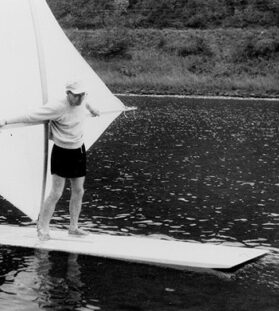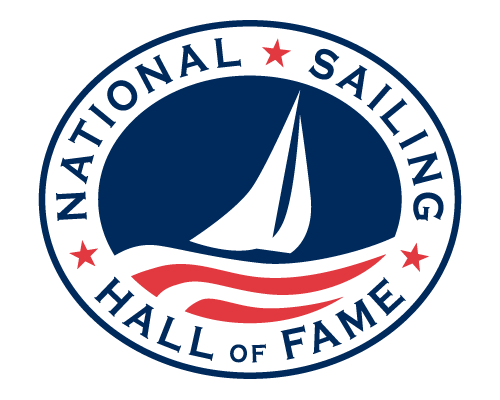NEXT

Deceased , Modern
S. Newman
Darby
1928 - 2016
S. Newman Darby is recognized as the first person in the U.S. to conceive of connecting a hand-held sail rig fastened with a universal joint to a floating platform for recreational use. He called it sailboarding in 1965 when he published his designs in Popular Science Monthly magazine. The following is excerpted from his obituary, printed in the New York Times December 26, 2016: Mr. Darby created his sailboard in 1964 out of frustration because the waves on lakes, like the one near his home in Wilkes-Barre, Pennsylvania, were not big enough to surf on. His solution was to attach a sail to a surfboard, and the combination worked. But it was flawed: It could not turn sharply or go well against the wind. So he created a universal joint using a nylon rope to link the sail to the board. This enhanced his control of steering and speed. Mr. Darby’s enthusiasm spilled over into an article he wrote for Popular Sciencemagazine in 1965 about his invention. “Sailboarding is sailing with a difference,” he wrote. “You get all the fun of handling a fast, responsive boat. You can have the fun of spills without the work of righting and bailing out. And you can learn to master a type of maneuvering that’s been dead since the age of the picturesque square-riggers.” He began a sailboard-making business and started to pursue a patent, but the growing cost of lawyers short-circuited the effort. Around the same time, two other men, Jim Drake and Hoyle Schweitzer, had devised their own version of a sailboard, and in 1970 they obtained a patent. They called their board the Skate before renaming it the Baja Board and finally the Windsurfer. When Mr. Darby and his wife, Naomi, saw how similar the rival sailboard was to the one that he had written about in Popular Science, they contacted the federal Patent and Trademark Office. They later told American Windsurfer magazine that a top patent official had advised them to write letters to the agency, as well as to the Windsurfer company, to invalidate the patent. Mrs. Darby wrote the letters but was told not to send them out. “The lawyers scared Newman left and right that we would get in trouble,” she said in an interview last week. Mr. Schweitzer bought out Mr. Drake and expanded the company, Windsurfer International. A lawsuit by the company against a licensee led to the discovery of Mr. Darby’s invention and to the recognition that it had preceded theirs. The patent controversy was painful for Mr. Darby. When American Windsurfer published a profile of Mr. Drake and Mr. Schweitzer in 1996 depicting them as the fathers of windsurfing, Mr. Darby responded with a letter and a video, containing early footage of his wife and his sister-in-law sailboarding, that argued for his credit. The magazine responded by conducting two lengthy question-and-answer sessions with Mr. Darby and his wife that let them tell their story. John Chao, who edited the magazine until it ceased publication in 2004, said that was all it took to convince him. “We loved it,” he said in an interview. “We were delighted to bring recognition to him.” Mr. Darby received further recognition for his invention when the Smithsonian Institution’s National Museum of American History in Washington D.C. was alerted to his story by Chad Lyons, a windsurfer. In 1998, the museum acquired Mr. Darby’s archive of sailboard sketches, mechanical drawings, notebooks and film, and mounted an exhibition. The belated acknowledgment did not bring any financial reward to Mr. Darby, who continued to make his living as a sign painter (and who continued to windsurf into his 70s). But, his daughter Wendy said, the recognition was enough: “He just didn’t want someone else to take credit for it.” His wife recalled in an interview that when Mr. Darby was first experimenting with his sailboard in 1964, he said to her, “This is so much fun, it could be an Olympic sport.” Twenty years later, in Los Angeles, windsurfing became part of the Summer Games.
[searchandfilter id="7549"]
Preserving America’s Sailing Legacy
Engaging Sailing’s Next Generation
Stay Connected to the National Sailing Hall of Fame
